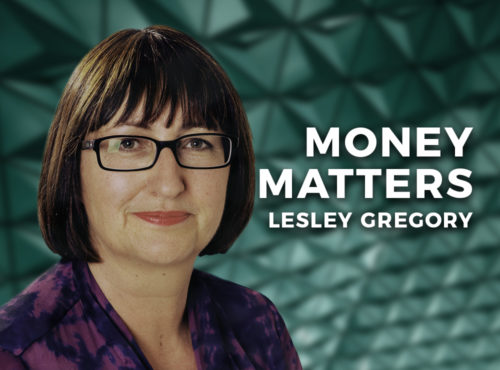
By LESLEY GREGORY
These are uncertain times for many people. If you run a business your revenue may be shrinking. If you work in the gig economy, your clients may be cutting back on outsourced services. Some of you may be on reduced hours or unpaid leave or can no longer count on your regular bonus or commissions. Others will have lost their jobs, or face the prospect of this happening.
We’ve talked about budgeting and having an emergency cash buffer, and I hope you have that in place to help you now. But what can we do to reduce living expenses quickly and sharply if we need to?
So, where to start? For this longer than usual column, I’ve looked at the official figures showing where we spend most of our money — the basket of goods that the national statistics office uses to track inflation — so we can start at the top and hit the big expenses first. This is national data showing the proportion of money spent in broad categories, and it won’t run true for everyone, but let’s use it as a rough guide to work through.
Housing & household services (30%)
Mortgage repayments or rent are the biggest expense for most of us. Falling interest rates have helped ease the burden for borrowers in recent times, but if you’ve been on a fixed rate it will be worth talking to your bank to see if you can move to a lower rate. Check if there are any refinancing costs and weigh those up against the savings. At this time, governments and banks want to keep people in their homes.
Do not hesitate to talk to your lender about your individual circumstances, and do it early. Banks have specialist “hardship” teams who can help you. Some are already actively offering repayment deferrals because of COVID.
Utilities like electricity and gas fall under the housing category. It’s an area where many of us just “set and forget”. But now’s the time to use a comparison service to find a better package – possibly with your current supplier. If you find a better deal elsewhere, ask your provider to match it. You could save hundreds of dollars annually.
If you can’t get a cheaper deal, get into good habits such as using heating and cooling only when needed (dress for the weather, don’t just turn a dial). Your energy supplier may be able to tell you what’s using the most energy. We recently learned that ‘standby and always on’ was our second-largest drain of energy, at nearly 20 per cent of our bill. Get into the habit of turning things off at the appliance, or even at the wall. Shut down your computer when not in use (note to self).
Recreation & culture (14%)
This category covers toys, games, gym fees and exercise equipment, gardening and pets, along with tickets to the football, or a concert or theme park. Some of those will be new “essentials”, and some will already be enforced savings, with the local gym closed and large gatherings on hold, at the time of writing.
Streaming services for film, TV programs and music provide some more room for movement in this category, however. Don’t get me wrong: settling in to a good movie or binge watching some Scandi Noir is a great distraction if you’re stuck at home. But how many TV services are you paying for? Could you stick with free-to-air? Could you choose one paid service and drop the others? The same goes for music platforms.
Subscriptions more generally should get a thorough review. What apps are you paying for? What magazines are on an annual digital subscription you’ve forgotten about? What automatic renewals are coming up?
Work out which subscriptions are worth keeping and which ones aren’t. Search through your old emails for the words “subscription” and “renewal” and see what you find. Look back through your credit card and bank statements for the past year to spot regular payments and renewals. Your phone will also contain information about services you’ve signed up for. Here are some instructions to help iPhone users, and for Android users. Another place to look is your Amazon account.
Transport (12%)
You’re probably already saving by driving less and not paying for parking, or not paying for public transport. But now’s the time to think about that second car. Even just sitting there it’s costing you insurance premiums, registration and maintenance.
Takeaway food (10%)
This is easy money if you need to cut back (though I’m also keenly aware of the impact of COVID on small businesses). How often do you get takeaway food? A family of four could easily spend £30 on dinner and potentially much more. Do that once a week for a year and it adds up to more than £1500.
Food & non-alcoholic beverages (8%)
Choose the “home brand” for products like flour where there’s little difference in quality. And make sure to compare brands at the unit price, so you’re getting more for your money – one packet might have 20 capsules for £10 while another has just 15. Consider what “luxuries” you can live without, for now at least.
Miscellaneous goods & services (8%)
This category includes cleaning services. This is an obvious area if you need to cut back, as much as you’d like to support your cleaner at this time. Social distancing and isolation will force our hands in any case.
Clothing & footwear (5%)
Most of us will be reducing this sort of spending without even thinking, with many shops closed and little need to dress ‘smart’ for now. But now’s an opportunity to review how much you spend on clothing, generally, with an eye to better habits in the longer term.
Furniture & household goods (5%)
These purchases will largely be on hold too. But if your need to be frugal extends for more than a few weeks this is where we can make choices about what we need, how much we’re prepared to pay for it, and whether second-hand could do the job just as well.
Alcohol & tobacco (3%)
I’m not going to preach. Just remember that, at £10 a packet, a pack a day habit is costing you £3650 a year. If you’re the average drinker, you could save about £1000 by halving your consumption – say, one glass of wine with dinner rather than two. The good news is that having a drink at home is much less expensive than having one in a bar.
Communication (2%)
It’s time to review not only your internet and mobile phone providers, but whether a specific package actually suits your needs. Are you paying for more data than you actually use? Could you do better by “bundling” your phone and internet services? Are you paying for a fixed or landline phone that’s actually silent?
The official shopping basket is rounded out with education (2%) and health (2%), neither of which are big areas for savings. If anything, working on new skills could be a worthwhile investment of your time (check out free courses on platforms like Coursera).
I hope this exercise helps those of you who need to whittle back their spending.
Next time: If you haven’t been adversely affected financially by the coronavirus crisis, what can you do to help businesses in their hour of need?
LESLEY GREGORY is an experienced personal finance and consumer journalist. If you’re interested in more of her personal finance tips, here are some more of her most recent articles:
How to avoid excessive funeral costs
What you need to know about comparison sites
Why you should sell your second car
Who do loyalty schemes reward? Not who you think
What’s in the back of your financial cupboard?
Does your bank deserve your custom?










